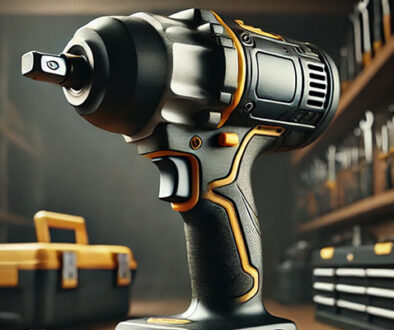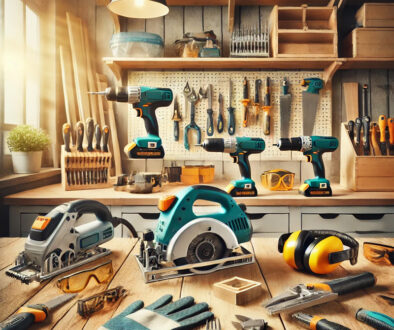Impact Driver
An impact driver is a powerful tool designed for driving screws and fasteners with ease. It combines rotational force with concussive blows to deliver high torque, making it ideal for tough tasks where a standard drill might struggle.
Key Features
-
Torque and Power: Impact drivers generate significantly more torque than regular drills, making them perfect for driving large screws or bolts into hard materials like wood and metal.
-
Impact Mechanism: Unlike drills, impact drivers use a hammer-and-anvil mechanism. This delivers rapid, forceful impacts, increasing the torque applied without causing kickback to the user.
-
Compact Design: Typically smaller and lighter than drills, impact drivers are easy to handle in tight spaces and overhead tasks.
-
Hex Chuck: They feature a quick-release 1/4-inch hex chuck, which allows for fast bit changes and accommodates a wide range of hex-shank bits.
Applications
- Construction and Carpentry: Ideal for framing, decking, and fastening subflooring, where large screws are commonly used.
- Automotive Work: Useful for loosening or tightening lug nuts and bolts that require high torque.
- Metalworking: Can drive self-tapping screws and fasteners into metal surfaces efficiently.
Advantages
- Efficiency: The combination of rotational force and impact makes driving screws faster and more efficient, reducing user fatigue.
- Control: The lack of kickback allows for greater control over the tool, making it easier to drive screws accurately.
- Versatility: With the right accessories, impact drivers can handle a variety of tasks beyond driving screws, such as drilling holes with hex-shank drill bits.
Limitations
- Precision Drilling: Impact drivers are not ideal for precise drilling tasks where control over depth and diameter is critical.
- Noise and Vibration: The impact mechanism can be noisy and produce vibrations, which may be uncomfortable over extended periods.
Differences from Drills
While both drills and impact drivers are used for fastening, there are key differences:
- Mechanism: Drills rely on constant rotational force, whereas impact drivers add percussive force for increased torque.
- Chuck: Drills typically use a three-jaw chuck that can accommodate round-shank bits, whereas impact drivers use a hex chuck.
- Speed: Drills often have variable speed control for precise drilling, while impact drivers focus on torque rather than speed control.
Safety Tips
- Wear Protection: Always use safety goggles to protect against debris.
- Secure the Workpiece: Ensure the material is clamped down to prevent movement.
- Use Appropriate Bits: Only use hex-shank bits designed for impact drivers to avoid damage and ensure safety.
Conclusion
Impact drivers are invaluable for anyone working with heavy-duty fasteners or tough materials. Their ability to deliver high torque with minimal effort makes them an essential tool in construction, carpentry, and automotive work. By understanding their strengths and limitations, users can effectively leverage impact drivers to tackle challenging tasks with greater efficiency and precision. Whether you’re a professional contractor or a DIY enthusiast, an impact driver can significantly enhance your toolkit.





